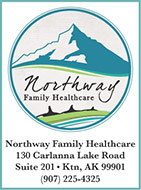|
Fish Factor Cod decline blamed on younger fish not surviving warmer ocean temperaturesBy LAINE WELCH
December 19, 2017
Gulf cod catches for 2018 will drop by 80 percent to just under 29 million pounds in federally managed waters, compared to a harvest this year of nearly 142 million pounds. The crash is expected to continue into 2020 or 2021. Cod catches in the Bering Sea also will decline by 15 percent to 414 million pounds. In all, Alaska produces 12 percent of global cod fish. The bad news was announced by the North Pacific Fishery Management Council which sets the catches for more than 25 species in waters from three to 200 miles from shore in the Gulf and the Bering Sea. “It’s almost like a double, triple, quadruple disaster because it’s not just one year,” said Julie Bonney, director of the Alaska Groundfish Data Bank. She added that the cod decline will decrease revenues for fishermen who use longline, pots, jig and trawl gear and make it more difficult for processors to fill their market demands. It also will be a huge hit to the coffers of local communities which get a three percent tax on all fish landings. Kodiak fisheries analyst, Heather McCarty, called the cod crash “devastating” for the short- and long term. The cod decline is blamed on younger fish not surviving warm ocean temperatures that began in 2014. “It was different than other years in that it went really deep, and it also lasted throughout the winter. What can happen is the food source can deplete rapidly when the entire ecosystem is ramped up in those warm temperatures,” said Steve Barbeaux, a scientist with the Alaska Fisheries Science Center in Seattle. The warm water also hurt cod egg survival and wiped out several year classes of juvenile fish. The harvest numbers for state waters (inside three miles) also will plummet as they are based on the federal catches. That will really hurt small boat fishermen. A breakdown by the Aleutians East Borough shows state water cod catches next year in the Gulf will total less than 10 million pounds compared to more than 48 million pounds in 2017. As further examples of badly it will play out in some Gulf communities – at Cook Inlet the cod take next year will drop to under 700,000 pounds compared to more than 6.2 million pounds in 2017. At Prince William Sound, the cod catch will be less than one million pounds, down from 4.3 million pounds. At Kodiak, the state waters cod catch in 2018 will be 2.2 million pounds, down from more than 12 million pounds in 2017. Kodiak City Council member John Whiddon said there are criteria for declaring a fisheries disaster prior to an event occurring, which include certain thresholds. The City of Kodiak plans to get a disaster declaration request into Governor Walker’s hands by the end of this year. It’s more than six months away but participants are already signing up for the second annual Bristol Bay Fish Expo set for early June at Naknek. The Expo was launched last year as a way to open the doors of the Little Angels Child Care Academy. “It was pretty phenomenal. We raised $17,000 and our goal was $13,000. It was awesome,” said Katie Copps-Wilson, an Expo co-organizer. The theme of last summer’s Expo was ‘Bridging the Bay’ with an intent of better connecting the surrounding communities with the fishing and processing sectors. “It really gave the people, the businesses, the fishermen – people who come into our community year after year - a venue to get to know each other better and help celebrate the community.” The first Expo attracted 44 exhibitors plus sponsors of various events that will be repeated this go around. “We had a ‘speed dating’ job fair for captains and crew. It went really well and a lot of matches were made,” Copps-Wilson said with a laugh. Another popular event was a fashion show that showcased fishing regalia and vintage items from around the Bay. That event, sponsored this year by Nomar Fisheries Gear of Homer, will expand to include wearable arts on the fashion runway. The 2018 theme is ‘Celebrating the Past; Sustaining the Future’ and will showcase Bristol Bay’s processing history. Copps-Wilson said local processors are some of the Expo’s biggest supporters. “They had so much fun having booths and are already planning for next year,” she said. “It’s their opportunity to get out into the community and see people and visit. A lot of these people have been coming here their whole lifetimes and they’ve never been able to be in a such an interactive setting.” The Fish Expo dollars will always go towards sustaining the child care center, she said, and next year will alsobenefit the local Boys and Girls Club. “People really appreciate that it’s not just a trade show and who knows where the money goes. The money is going back into the community to help out kids’ services,” Copps-Wilson said, adding that the Fish Expo has surpassed all expectations. “I don’t think we realized what we created,” she said. We were interested in finding a way to raise some money so we could open the doors for Little Angels, but it grew into this other thing and we had no idea how big it would be.” Bristol Bay Fish Expo is set for June 8-9 at Naknek High School. Registration is open now at a reduced rate through the end of January. Learn more at www.bristolbayfishexpo.com Fishing almanac debuts: The first Alaska Young Fishermen’s Almanac has debuted in time for holiday giving and it is selling fast. The 140 page book, published by the Alaska Young Fishermen’s Network, includes stories, advice, recipes, photos and illustrations from across Alaska. The effort is touted as “a first-of-its-kind cultural touchstone that communicates and celebrates our unique, shared and cherished fishing ways of life”…and “it captures the ingenuity, persistence, humor and passion of the next generation of community and fishing leaders in Alaska and conveys the importance of community-based fishing livelihoods.” “It turned out so beautifully. I am so excited to see it finished and in people’s hands,” said Hannah Heimbuch who participated in the project. “The vibrancy and beauty of fishing comes through from all of the contributions,” echoed Rachel Donkersloot, Working Waterfronts Director for the Alaska Marine Conservation Council which helped fund the almanac along with the Alaska Humanities Forum. “From the poems and short stories and the colorful photos that bounce off the pages. These are our young Alaska fishermen and they are so creative and courageous and funny and hard-working. We also collected great advice from some of our veteran fishermen. I’m just thrilled with the way it came out.” All proceeds from sales of the $25 almanac will go towards volume #2. Find the Alaska Young Fishermen’s Almanacat the Salmon Sisters website at www.aksalmonsisters.com/.
Representations of fact and opinions in comments posted below are solely those of the individual posters and do not represent the opinions of Sitnews.
SitNews ©2017 Stories In The News Ketchikan, Alaska
|
||||




